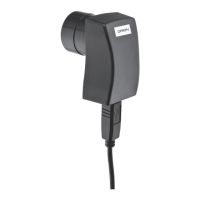7
refocus (using the telescope’s focus
knob) if the focuser drawtube has
moved a bit inward or outward when
the camera was rotated.
The image can also be ipped in
horizontal or vertical by selecting
Video Capture Filter in the Options
menu and clicking on horizontal and/
or vertical checkbox (Figure8).
NOTE: The Special Effect, Face Tracking
and Face Effect options in the Video
Capture Filter are not used for Astronomy
purposes.
9. Select Set Capture File from the File
menu and name your le including
the AVI extension name. IE mymovie.
avi. Click Open.
10. Enter the amount of disk space to
allocate as a buffer for this data.
Movie les need a large amount
of disk space. Enter a value such
as 50 Megabytes or higher. Press
OK. The size of the captured data
may be much higher than this value
depending upon number and size of
frames captured.
11. Select Set Frame Rate under the Capture menu. Check the box Use Frame
Rate and type 30. Press ok.
12. Select Set Time Limit under the Capture menu. Check the box Use Time
Limit and type 20. Press OK.
13. Select Start Capture under the Capture menu.
14. Press OK when you are ready to capture Images.
An AVI movie sequence of 600 frames (30 frames per second x 20 seconds) will
now be recorded.
The total number of captured frames is displayed on the bottom bar. If frames are
being dropped this will be displayed and the frame rate or resolution should be set
to a lower value to prevent this.
You have now taken your rst images with the SSUEII! This simple method of
imaging is exactly how the camera is used to capture terrestrial subjects during
daylight hours. Close-up images of birds and other wildlife or faraway vistas can all
be obtained in this way with the SSUEII. Solar images can also be taken during the
day with an optional full-aperture solar lter over the front of the telescope.
Figure 8. Changing image ip
via options->Video Capture Filter-
>Advanced Tab.
Figure 9. The camera’s eld of view
is comparable to a 5mm focal length
eyepiece. This example uses an Orion
ShortTube 80mm Telescope.

